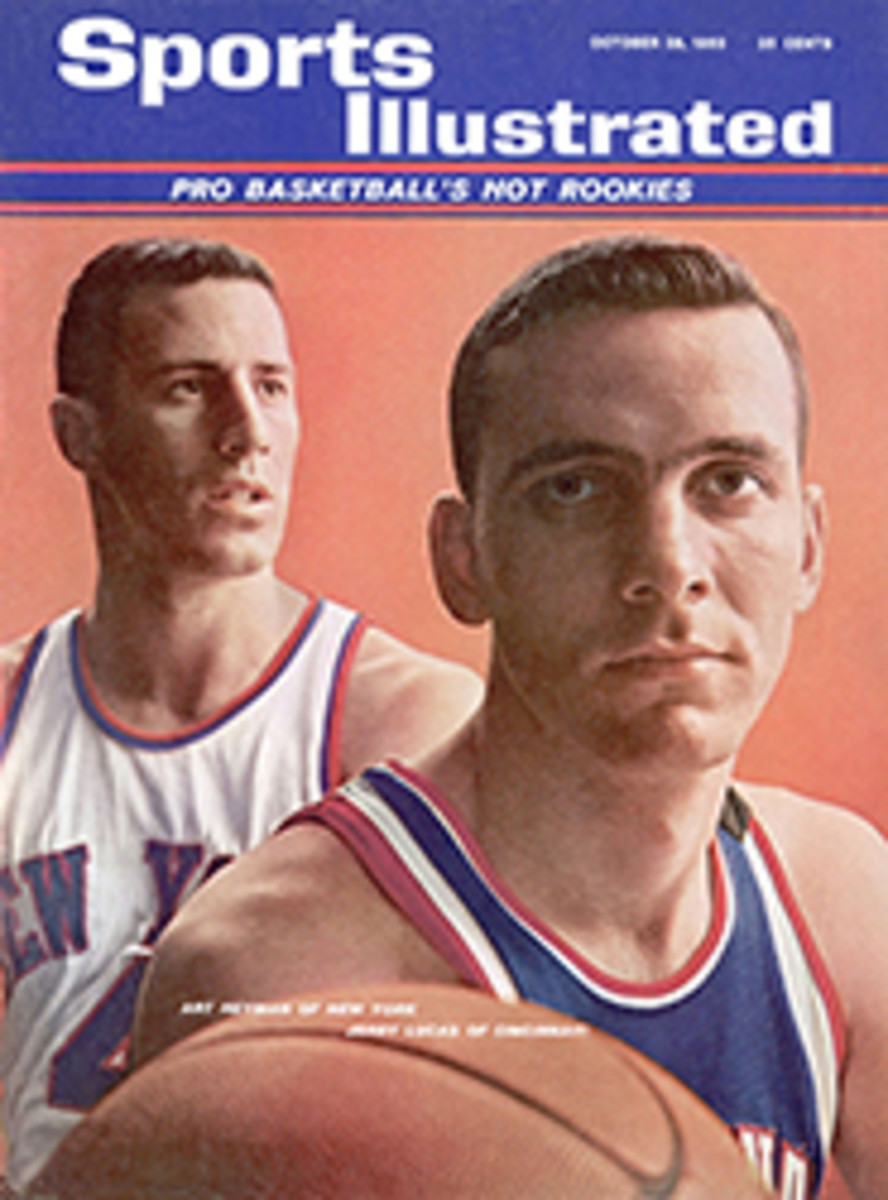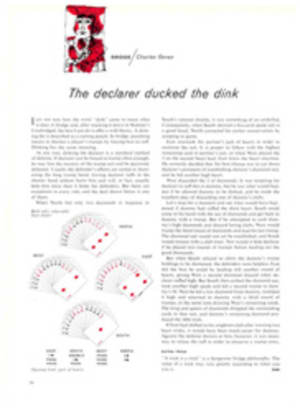
A very dry run in Tokyo
The Tokyo International Sports Week ("Don't call it the pre-Olympics," Japanese officials implored, although that is the name they gave it before they failed to get an Olympic Committee sanction) turned out to be a surprisingly successful dry run. Deliberately scheduled exactly 365 days before the opening of the XVIII Olympiad in 1964, the week was a half-sized facsimile of next year's Games, save that Emperor Hirohito was not there (Crown Prince Akihito stood in for him) and the Olympic flame was absent. Some 4,000 athletes from 35 countries participated, more than a dozen of them world-record holders. If individual performances did not come up to expectations, the Japanese organizers were ecstatic because of their triumphs over other problems: crowd control, transportation to and between a dozen sites 38 miles apart, housing and feeding of the athletes, interpreter services, the condition of the athletic facilities themselves—everything, in fact, but the weather.
On opening day it came up cloudy, windy and unseasonably cold—the kind of weather one would expect for an Army-Navy game. The Olympics had been scheduled for October to avoid Tokyo's intense midsummer heat and the September typhoon season. Japan, which lies on the fringe of the Pacific "typhoon track," is supposed to be clear by mid-October but somehow never is. As Sports Week opened, Typhoon Kit was boiling across the Pacific toward Japan, packing winds of 115 miles an hour, and Typhoons Lola and Mamie were picking up speed not far behind. The cold, cloudy weather was Kit's advance calling card, and Sports Week officials were in constant nervous touch with the weather bureau. As the well-bundled athletes paraded into refurbished National Stadium in downtown Tokyo's Meiji Park, one shivering Japanese observed hopefully, "We have an old saying in Japan that autumn weather is changeable as a woman's mind."
Fortunately, it turned out that way. Kit, Lola and Mamie veered away and took their destructive power elsewhere. As the events began, the weather became so beautifully clear that the snowcapped summit of Mount Fuji, 75 miles away, was clearly visible in downtown Tokyo—a rare phenomenon. Temperatures improved to comfortable levels. There was enough gusty wind to tax the skill of some of the world's best sailors in Sagami Bay, but not enough to interfere with track and field performances in the sheltered National Stadium. "Give us the same weather next October," said a relieved Japanese official, "and we will have no cause for complaint."
Aside from the minor disputes that accompany any international track meet these days, there was little cause for complaint about anything. Sprinters found the track in National Stadium a trifle slow. High jumpers grumbled that the takeoff points were too soft and that foam-rubber strips in the landing pit produced muscle strains. Japanese officials promptly replaced the rubber strips with sand and said they would investigate other complaints, including those that the modern pentathlon riding course was too easy and the judging of the women's gymnastics too tough. Foreign athletes who spoke no English said there were not enough interpreters. Those who spoke English said their interpreters were not proficient enough. There was grousing about the time it took to reach various practice sites—sometimes up to 90 minutes each way. But all will be taken care of by next October. Indeed, the reason it took so long to reach practice areas was a proliferation of dusty detours around new superhighways that, when completed, will simplify matters.
Tokyo mobilized 21,000 police for traffic control on the opening day of Sports Week and they performed magnificently. Traffic moved in near-miraculous fashion, thanks to more than 30 conferences held in recent months by police officials. In and around the stadium itself were 2,550 policemen on foot, 16 patrol cars and 70 motorcycle cops. The fire department had 1,279 men on emergency stand-by.
At the end of the opening ceremony, police emptied the stadium of 68,000 spectators in just 18 minutes and restored normal traffic conditions in only 50 minutes. Not a single major traffic jam developed—a tremendous achievement in a city beset by the world's most chaotic street network. There was no shrill whistle-tooting either. Cops held "stop" and "go" placards to direct vehicular and pedestrian traffic, and the device worked like a charm.
With customary thoroughness, the Japanese had timed the opening ceremony to the minute. The speeches, the parade of athletes, releasing of 5,000 pigeons and 5,000 balloons, and march-out took exactly 93 minutes—three minutes too long. Embarrassed officials had an apologetic explanation: "In rehearsals we used young men as standins for dignitaries who are much older. We forgot that older men walk slowly, take a little longer to reach the podium and, once there, must have a few seconds to catch their breath before they start to speak." Meticulous attention to detail was reflected in official worrying over such trivial matters as the fact that a few of the 5,000 pigeons refused to fly and smoke trails of five jets in tight formation over the stadium did not give the exact reproduction of the five Olympic colors as intended. "If that's all they have to worry about," said an Australian official, "they'll have the perfect Olympic Games."
Of course, there is still much to be done. The National Stadium, expanded to 72,000 capacity, is completed, but parking space must still be found for 6,500 additional cars in the stadium area, and negotiations for buying land are slow and tortuous. The $13 million Komazawa sports complex for soccer, field hockey, wrestling and volleyball is only 65% complete. And work has just begun on the futuristic Yoyogi sports center for swimming and basketball and the $5.5 million judo hall on a corner of the Imperial Palace grounds.
The main problem is housing. Because the Olympics will coincide with the height of the fall tourist season, Tokyo is going to have to find accommodations for an estimated 30,000 visitors. Even with a new 500-room Hilton Hotel just finished and the 592-room Shiba Prince and 1,500-room Otani scheduled for completion in time, Tokyo and the surrounding area will be able to house but 16,500 people in first-class Western-style hotels. Japanese inns are being renovated, with such niceties as Western-style plumbing to handle another 5,000 people. Youth hostels can take another 2,500 who do not object to spartan living, and authorities are canvassing private homeowners in an effort to find lodging for 1,500 more. They had better succeed. During Sports Week ordinary tourists filled the hotels to capacity. Foreign competitors were housed in downtown Tokyo's big Daiichi Hotel, where chefs made special arrangements to beef up the calorie count of their menus from a normal 3,000 daily to 6,000 for the athletes. There was friendly coexistence in corridors at the Daiichi, but to keep it within proper limits a squad of burly (by Japanese standards) house detectives kept male competitors off the sixth floor, which was reserved for girls. Even so, at least one romance blossomed. Pretty blond Per-Ola Ljunggren, 15, of Sweden announced to one and all that she had fallen in love with Germany's Hans-Joachim Klein, whom she first met at the British swimming championships only the month before. Klein, 21, told reporters, "Of course I like her, but love is a little too strong a word to express our present relationship." Whether it was love or not, their relationship paid dividends: Per-Ola won a gold medal in the 400-meter freestyle and Hans-Joachim won a pair in the 100-meter and 200-meter freestyle.
Japan, with a massive team of 3,400 athletes (1,300 of whom will compete in the Olympics), won most of the medals on sheer weight of numbers, but the week's outstanding performance came in the high jump when a towering 21-year-old Australian named Anthony Sneazwell—a virtual unknown—jumped 7 feet 2½ inches, to become the fourth highest jumper in history. Russian coaches were stunned at this potential threat to their world champion Valeri Brumel (who did not come to Tokyo for this meet). Track Coach Koropkin rushed to the jumping pits, watched Sneazwell barely miss at 7 feet 4¾ inches, and promptly bombarded Australian coaches with questions. "Who is he? What's his height and weight? We must watch this man closely." The world will be watching closely a year from now in Tokyo.
PHOTO
IN A SCENE THAT WILL BE DUPLICATED NEXT YEAR, 68,000 FILL TOKYO'S NATIONAL STADIUM FOR THE OPENING DAY CEREMONIES

